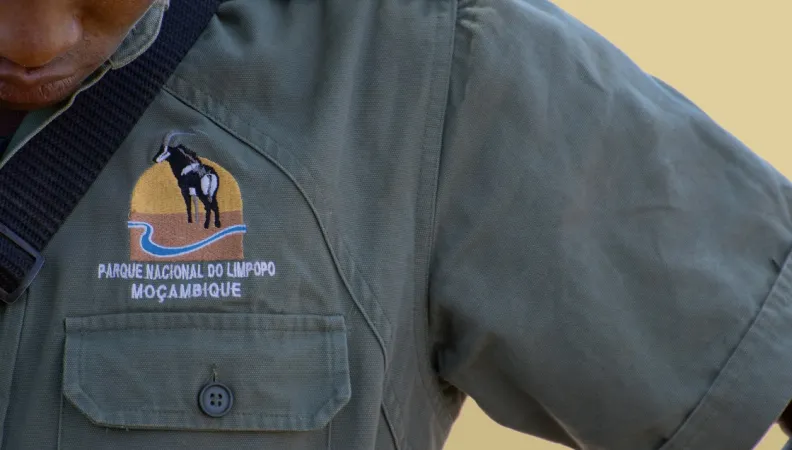Share the page
Written and Audiovisual Evaluation of the Limpopo National Park Development Project in Mozambique between 2007 and 2015

-
Project start date
-
2015Status
Completed
-
Project end date
-
2016
-
Project duration
-
1 year and 6 months
-
Country and region
-
Location
-
Massingir
-
Research program
This evaluation assessed AFD support to one of Mozambique’s largest parks—a park that is emblematic of the local and transborder challenges of territorial development of a protected area in Africa.
Context
Limpopo National Park (LNP) is one of the largest parks in Mozambique. Along with Kruger National Park (KNP) in South Africa and Gonarezhou National Park in Zimbabwe, it forms a set of transborder protected areas. In 2006, AFD decided to provide a grant of 11 million euros—the largest in support of protected areas until that time—to support the implementation of the LNP development management plan. The conservation approach highlighted by the LNP put equal importance on ecological preservation objectives and economic development objectives. The main strategy for meeting these two objectives was development of tourism.
Goal
AFD wished to carry out an ex-post evaluation of its intervention in the second phase of the support project for the Limpopo National Park. The LNP development project was indeed emblematic of AFD’s approach to supporting protected areas in the 2000s. This evaluation had several objectives:
- Analyze the validity, implementation, outcomes and effects of the project financed by AFD with regard to what had been targeted.
- Draw lessons that help determine the conditions favorable to the success of similar projects in the future.
- Promote heightened dialog with the project partners on the results of the evaluation.
- Increase the level of awareness of the issues related to the design and implementation of an integrated park project.
Method
This evaluation was innovative in that it focused on an audiovisual approach as an evaluation instrument. The audiovisual analysis and written analysis were carried out within the same evaluation process in order to take full advantage of their complementary nature. The aim was to have the evaluation results be both consistent (so that people would have the same understanding of the project outcomes regardless of whether they read or watched the evaluation) and complementary (in that the two analyses present the information differently according to the peculiar characteristics of either the written or audiovisual support). The evaluation was contracted to a consulting firm consortium made up of IRAM Développement and Groupe-conseil baastel sprl.
Results
The objectives of the project financed by AFD were relevant overall with regard to the local and regional context, the national policies, and the needs of the LNP as stated in its development plan. However, the initial intervention logic lacked clarity and was above all not very operational. The expected outcomes were only partially achieved.
The ecological integrity of the LNP was maintained but subject to challenges over the medium term. Animals were found to be on the increase and circulating freely between the KNP and LNP. For these outcomes to be sustainable, the protection and surveillance structure must be maintained over the long term, especially through continued government involvement in paying wage costs.
The development of tourist potential is limited, but good progress in legal and strategic terms was made. Little progress was made in terms of improving the living conditions of the people living in the Park, and it took a long time for this component to become operational. The human resources of the LNP were bolstered but remain insufficient in number for carrying out their strategic missions. Financial sustainability is not ensured in the short term due to the low level of income derived from tourism.
Lessons learned
The LNP development project, emblematic of the approach adopted by AFD for support to protected areas in the 2000s, was based on two hypotheses; this evaluation makes it possible to look back on these latter.
AFD’s first hypothesis was that the strong relationship between development and conservation of biodiversity (previously demonstrated in fishery and forestry programs) could also be found in protected area management projects. It was also thought that local populations with an economic interest in conservation of biodiversity would adhere to the establishment of a national Park decided on without consultation by the Government. However, the evaluation showed that there were hardly any positive repercussions for the inhabitants and that their adherence to the conservation objectives was weak. This was partially due to the low level of tourism development in the Park, as well as to the weakness of strategies implemented to make the connection between the health of ecosystems and the living conditions of the local populations.
The second hypothesis, focused more on the Mozambican authorities, concerned an open approach to conservation that promoted the mobility of animals and was based on the possibilities of cohabitation between the wild animals and the local populations. However, a fence was built by the LNP to reduce human/animal conflicts in the most populated region of the Park, at the request of the people living there. This outcome shows that this open approach to conservation is complicated to implement, and it questions LNP’s procedure of not involving the inhabitants in the management of wild animals.
In the end, the establishment of a protected area brings up the question of determining the rules that will apply to this territory and differentiate it from neighboring territories, all the while ensuring fairness among the inhabitants. Consultation mechanisms must be worked out in order to determine, through a territorial project, its governance system. This is probably what was most lacking in the strategy implemented by the LNP and what explains the big gap between the initial ambitious objectives in territorial co-management and the current mechanisms for the planning and implementation of the Park’s development.
Contact : Sabrina Guerard (guerards@afd.fr)
